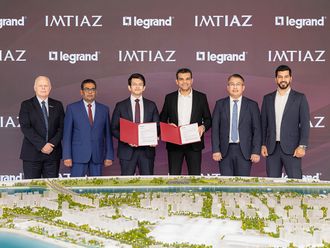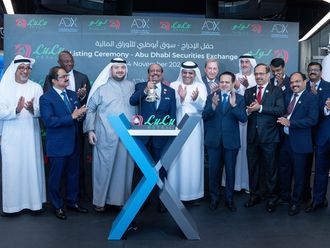
Dubai: Even the last plot — or set of plots — in Dubai’s prominent master-developments come with benefits. Omniyat Properties certainly found this to be the case with its super-premium One Palm Jumeirah project on the island (and where one of the units could well be the priciest apartment sold in Dubai).
Signature Developers is another to find the advantage from not being part of the initial rush to build. It is developing the Residences in JLT (with Taj Vivanta operating the hotel part) on a plot offering up unimpeded views of Shaikh Zayed Road, Dubai Marina, Emirates Golf Road stretch and Dubai’s vaunted skyline beyond it.
“In JLT (Jumeirah Lake Towers), our project plus the master-developer’s own Burj 2020 are among the final plots being built,” said Jayant Ganwani of Lals Group and one of the partners in Signature. “When we were looking for a plot, the choice was between Dubai Marina and JLT, which was among the last set of master-developments announced during the first Dubai real estate boom.
“After the crisis, JLT was one of the first to emerge strongly and with a focus on reinvesting into its infrastructure and creating a true living and working space. We find the structure available at JLT more robust and without the high built-up density the other master-development has. And unlike the rest of the existing towers at JLT, ours will not be on a shared podium.” (Signature also has a one-off project at the Downtown, with the tower’s location being adjacent to The Dubai Mall. It is in line for a Q4-16 handover.)
At the G+44-storey Residences, which is due for delivery in 2018, a third of the floors will be taken up by the Taj Group for a hotel and the rest will be for the apartments, the sales of which are to start post-summer with price tags from Dh1,650 a square foot to around Dh2,200. (Current values at the JLT cluster average Dh1,100-Dh1,200 a square foot.) “We will only have 80 apartments — and we could have fitted in lots more if our intent was space utilisation — and will wait for those buyers comfortable with our pricing,” said Ganwani. “It’s not a flipping kind of property we are building. It’s definitely for those with a buy-to-hold mindset.”
The developer has done his bit for the product — expected to cost Dh500 million — to look different. Taj Residences will feature glass pods jutting out from the exterior of the tower’s facade, which the developer rates as “floating private spaces” for apartment owners. With those pods (measuring 4.2 x 2.8 metres) on, the tower does have a look that sets it apart from the many jostling for attention on Dubai’s skyline.
Raju Shroff of Regal Traders and the other partner in the Signature joint venture is not too perturbed by the imminent sales launch — even though the overall JLT cluster has seen a sharp erosion in values during the recent correction. By some analysts’ reckoning, JLT unit values had dipped the most among Dubai’s established freehold clusters. Rentals for office spaces, especially at less high-profile towers, is also passing through a soft phase. “We are not unduly concerned about what’s happening in the market now,” said Shroff. “We are already vetting expressions of interest for some of the units ahead of the actual launch. When a project is offering apartments in sizes of even up to 11,000 square feet and with 4-metre high ceilings, potential buyers are not going to by capital appreciation possibilities alone.
“The way we see it these are the apartment versions of the homes at Emirates Hills. There will always be a buyer for these. Quality is always hard to build.”












